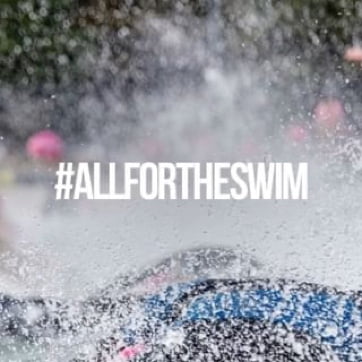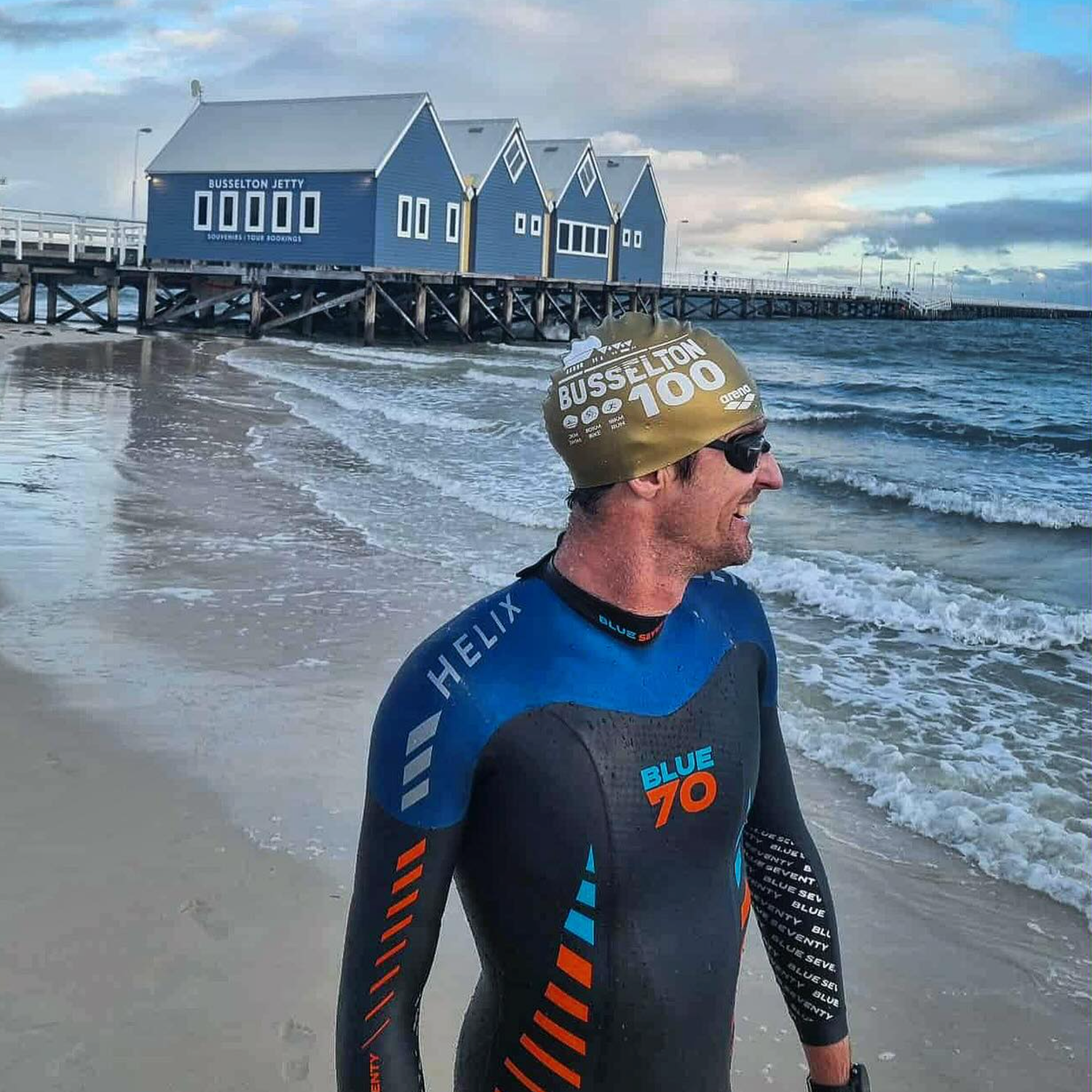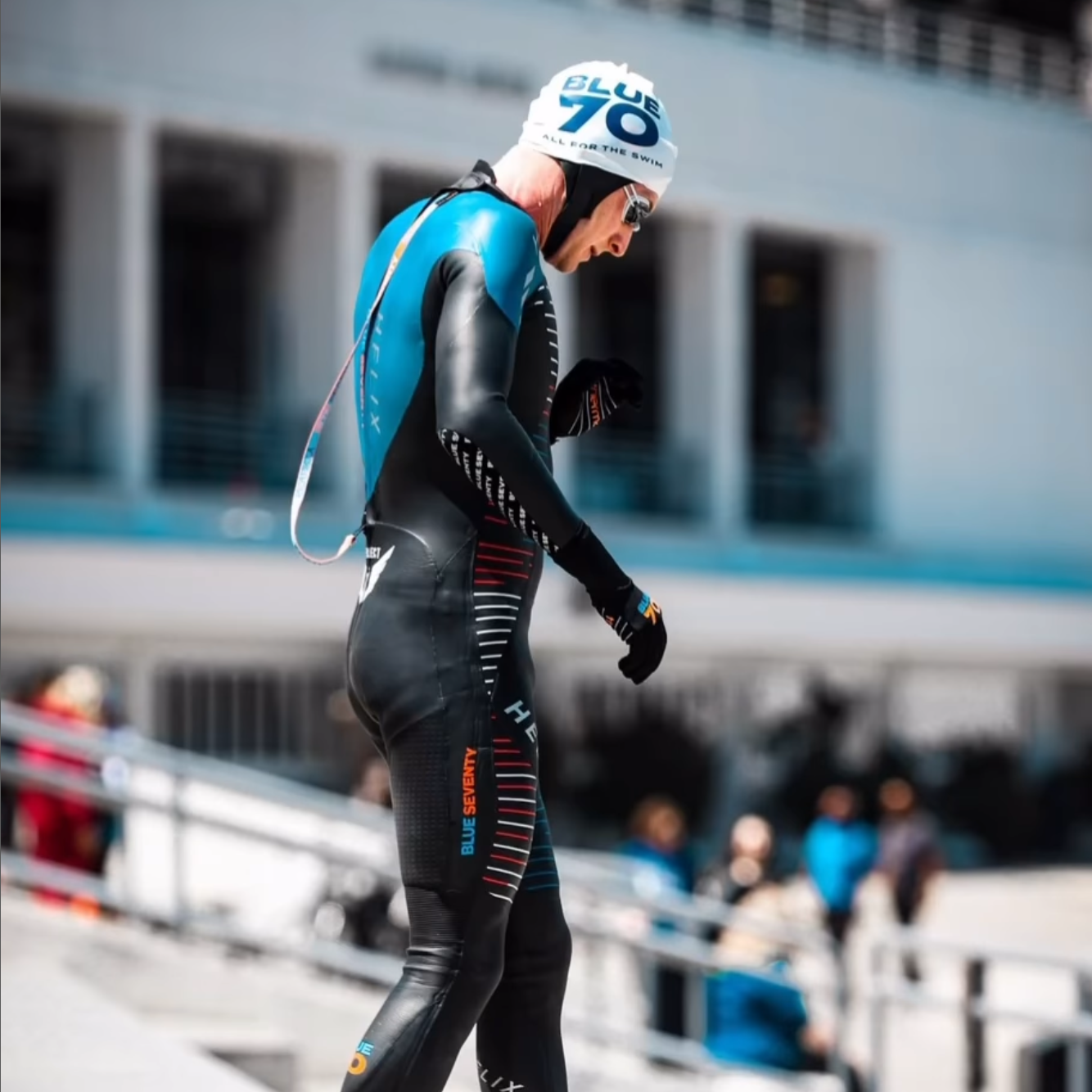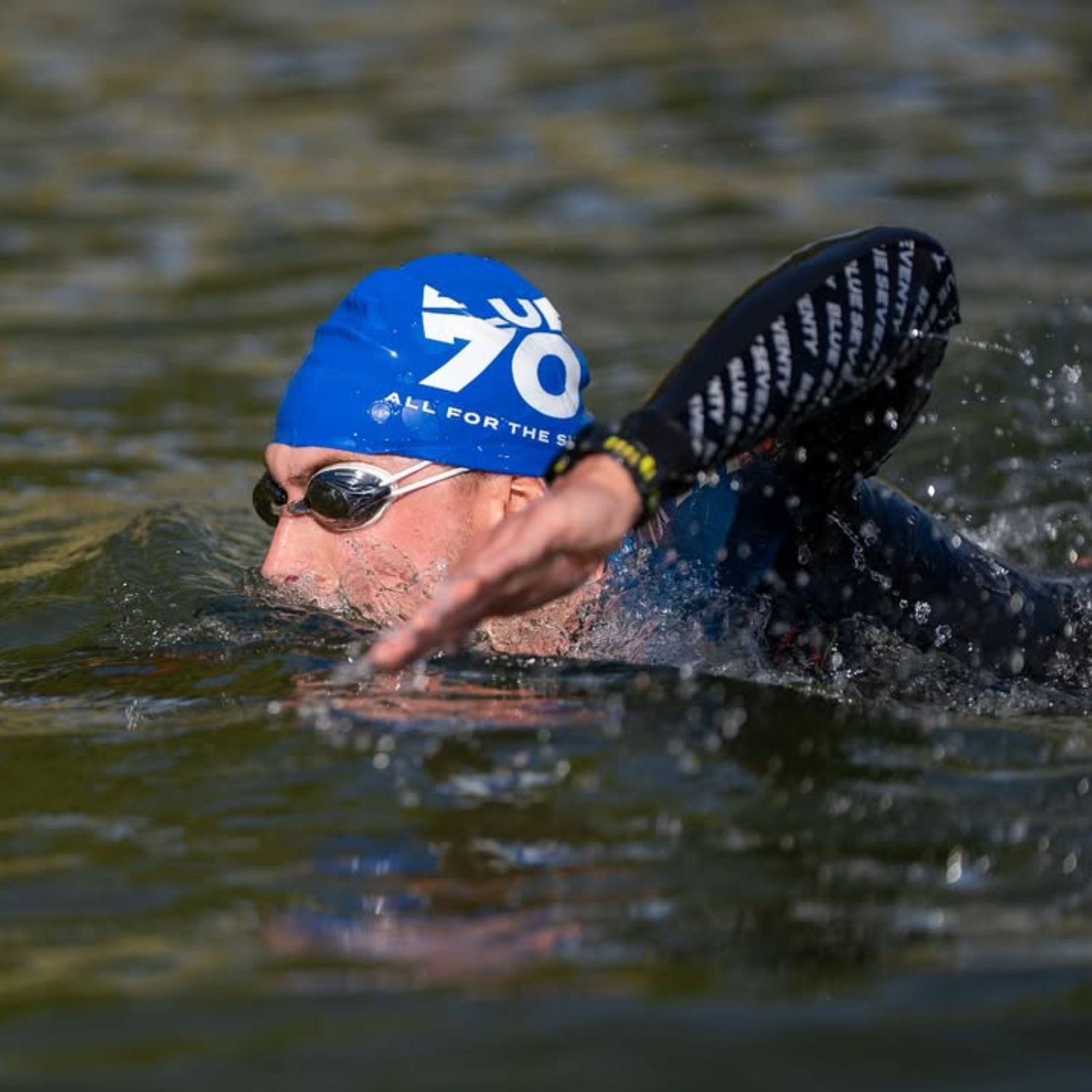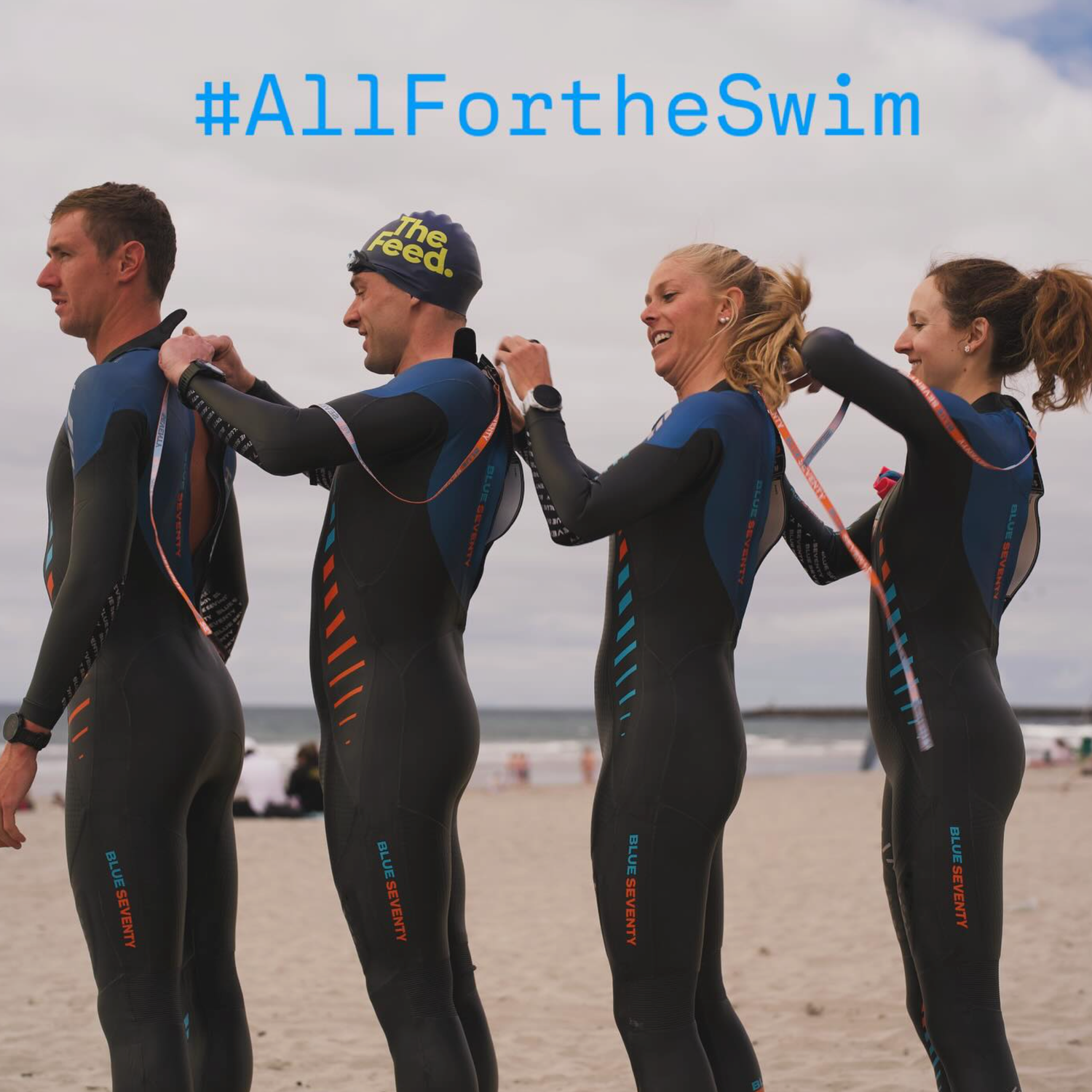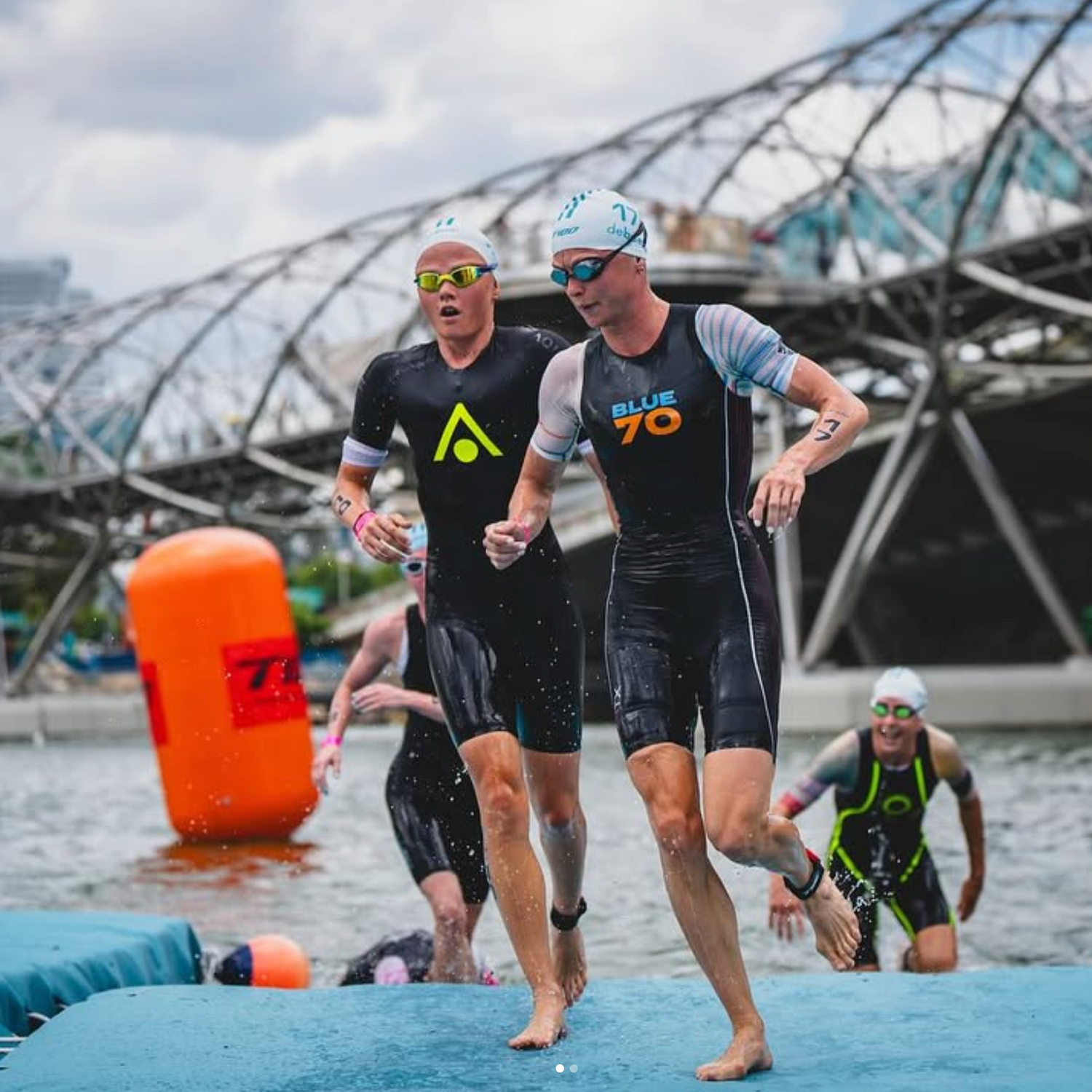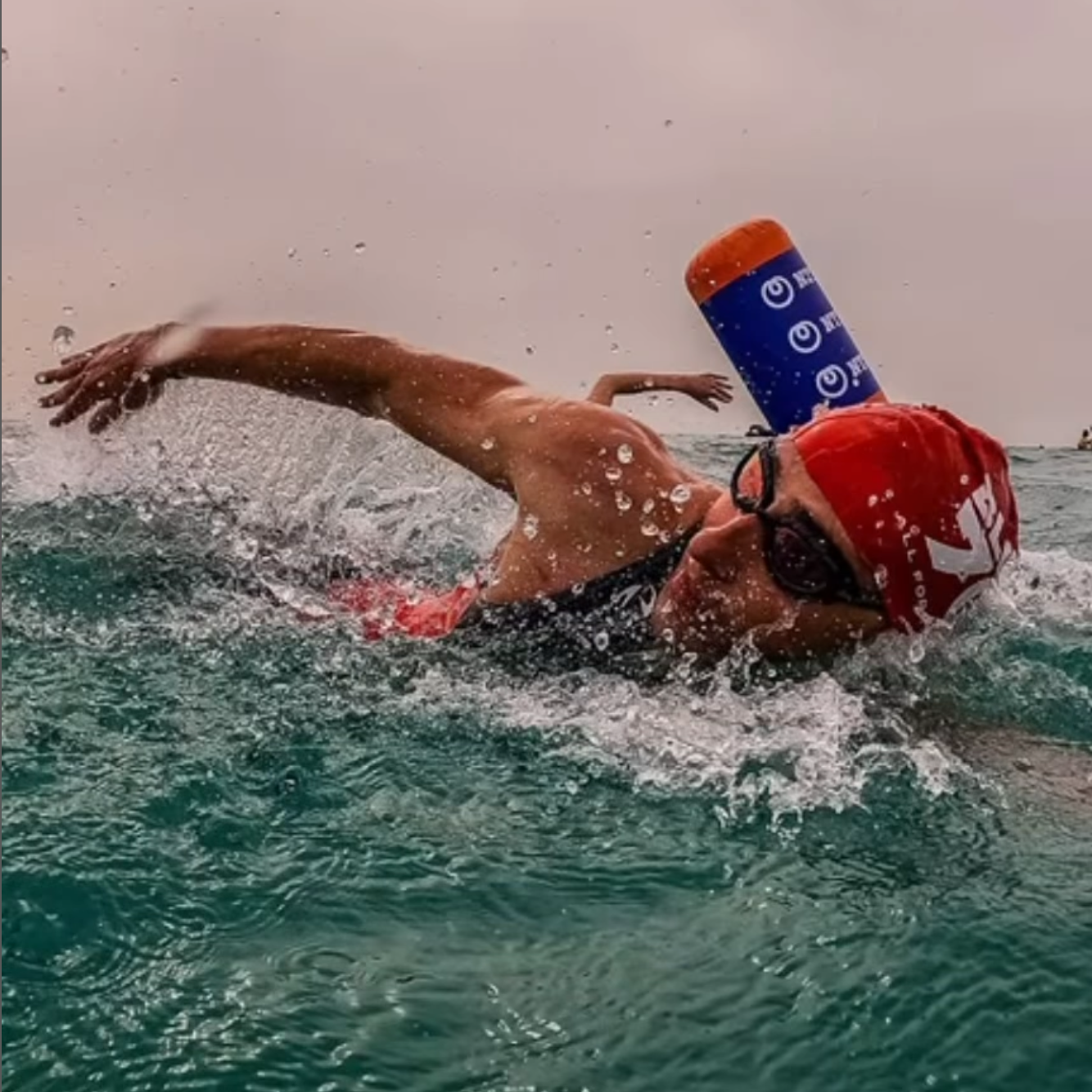When it comes to selecting the best wetsuit for swimming one can easily be overwhelmed with all the options out there. Blueseventy alone has 8 gender specific models! Add in different brands and styles and the choice becomes even more complex. Let’s explore the topic and help you decide on the best wetsuit for you and your goals in the water.
There are several key factors to take into account when buying your first open water wetsuit:
- Competitiveness
- Budget
- Frequency of Use
- Swim Distance
- Water Temperature
- Swimming Background / Skill Level
- When to Choose a Sleeveless Suit
All wetsuits are not created equal! Most important is to make sure you're looking at a triathlon wetsuit or a wetsuit designed for open water swimming. These suits will feature much more flexibility, a tighter fit and features to aid in a faster, more comfortable swim. Other wetsuits such as surfing or scuba wetsuits do not work well for swimming and you'll find yourself uncomfortable and tired at the end of the swim.
Another thing to keep in mind is that every brand has a different cut and size chart that is unique to itself. In addition, different levels of swimming wetsuit will use different a quality of neoprene which can affect the overall fit, comfort and flexibility of the wetsuit.

Competitiveness
If you are a competitive athlete: going for the podium, aiming to qualify for a Championship race, or looking to set a new personal best, then you definitely want to choose a wetsuit at or near the top of the line. In these situations, every advantage is critical to the overall goal. Our HELIX and REACTION models have a great deal more flexibility throughout the upper body which equates to a greater range of motion in your swim stroke. This means your swimming motion will be the most natural with minimal restriction in the shoulders resulting in less fatigue and faster swim times. These models also feature more elaborate construction methods and buoyancy technologies. Remember, buoyancy equals speed in the water.
Budget
It’s important to have a range for your budget so you know where to concentrate your search and make your comparisons. Most customers are satisfied when they've purchased the best performing suit within their budget. It’s better to buy the best suit your budget allows rather than to get the least expensive suit with the plan to upgrade later. The reason is that you’ll often end up spending more money as the resale value of used wetsuits is not very strong. Most people, rightfully so, want to spend as little as possible on a used wetsuit.
On a budget? The Blueseventy SPRINT is one of the top rated entry level wetsuits.
Frequency of Use
If you're swimming frequently in your wetsuit (more than once a week), it would be better to look at models that offer more flexibility and comfort, as these models also offer the best range of motion for your shoulders. However, durability will also be a key factor when choosing a wetsuit for frequent use. For swimmers using their wetsuit once a week or more we recommend the REACTION for those swimming longer distances / time, and the FUSION for those doing shorter frequent swims. These suits offer better mobility than the entry level SPRINT, and are more durable than the Helix. Designed for performance and speed, the HELIX is crafted with very thin, extremely flexible neoprene on the arms and shoulders which will break down more quickly than the other models, making it not a great choice for frequent use and training.
Swim Distance
The further you swim the more fatigue your swimming muscles will undergo. Wetsuits naturally place a resistance load on your shoulder and the longer the swim the more you will notice it. One of the most critical differences in wetsuits is the flexibility of the neoprene and there is a noticeable difference between different types of neoprene, for example the Yamamoto neoprene that is found in all of our wetsuits comes in 38 cell, 39 cell and 40 cell, with the higher number offering better flexibility. Wetsuits will make a swimmer faster compared to no suit, even with some resistance on the shoulders, due primarily to the improved body position wetsuits provides. For swims and races under a mile it is likely you will not notice this difference as much as when the swim extends beyond a mile. The further the swim, the more flexibility through the shoulders will be noticed and appreciated. All Blueseventy wetsuits are designed to provide the best flexibility and offer minimal resistance throughout your entire swim stroke. However, for example, the REACTION, which is crafted from a higher quality neoprene, will offer more flexibility than the FUSION.
Water Temperature
This is a critical factor and is also very much individual as some swimmers are more comfortable in colder water than others. All wetsuits provide some warmth, but for water temperatures below 56-58 degrees a purpose built cold-water suit can provide additional thermal properties. The THERMAL REACTION is fully lined with our Zirconium (a synthetic wool) jersey for extra warmth. On the opposite end of the spectrum a full suit over the course of a longer swim in temperatures above 70-72 degrees can be too warm. This is where having a Sleeveless (Long John) style wetsuit can be useful. While some athletes could comfortable swim without a wetsuit in these temperatures, most athletes will still opt to wearing a full or sleeveless suit for the speed, body position and buoyancy benefits of the neoprene.

Swimming Background / Skill Level
The more advanced swimmer you are the better “feel for the water” you possess. With a greater sense of this “feel” swimmers talk about, the more you will understand and appreciate the more flexible neoprene as it will allow you to have the most natural swimming stroke. Since 2010 we have built our HELIX wetsuit with a permeable fabric at the catch panel to return that crucial feel for the water that can be lost with a full neoprene arm. If you are new to swimming with less connection to your stroke mechanics, you will likely not notice the difference as much as a more experienced swimmer. The great news is that any wetsuit will exponentially help a beginning swimmer more than an experienced swimmer due to the improvement of body position in the newer swimmer.
When to Choose a Sleeveless Suit
While full suits are considered to deliver faster swim times than sleeveless models there are people who prefer a wetsuit without arms. Fit is a critical one – a sleeveless suit is certainly easier to put on and less claustrophobic than a full suit. If your body type makes fitting a full wetsuit more difficult, a sleeveless one can often fit more comfortably.They are also more affordable and obviously more suitable for warmer climates. Finally, sleeveless suits have the least amount of shoulder restriction since there are no shoulders and arms to content with.
As you can see there are several factors to consider when choosing the best wetsuit for you. We hope this helps send you on the right path to selecting the best suit for you and your budget.
One final critical factor to experiencing a great swim in a wetsuit is how one puts on a suit. An ill-fitted wetsuit, especially in the upper body and shoulders, leads to increased fatigue and a poor open water experience.
Check out our guide and video to fitting your suit optimally.
Happy Swimming!




